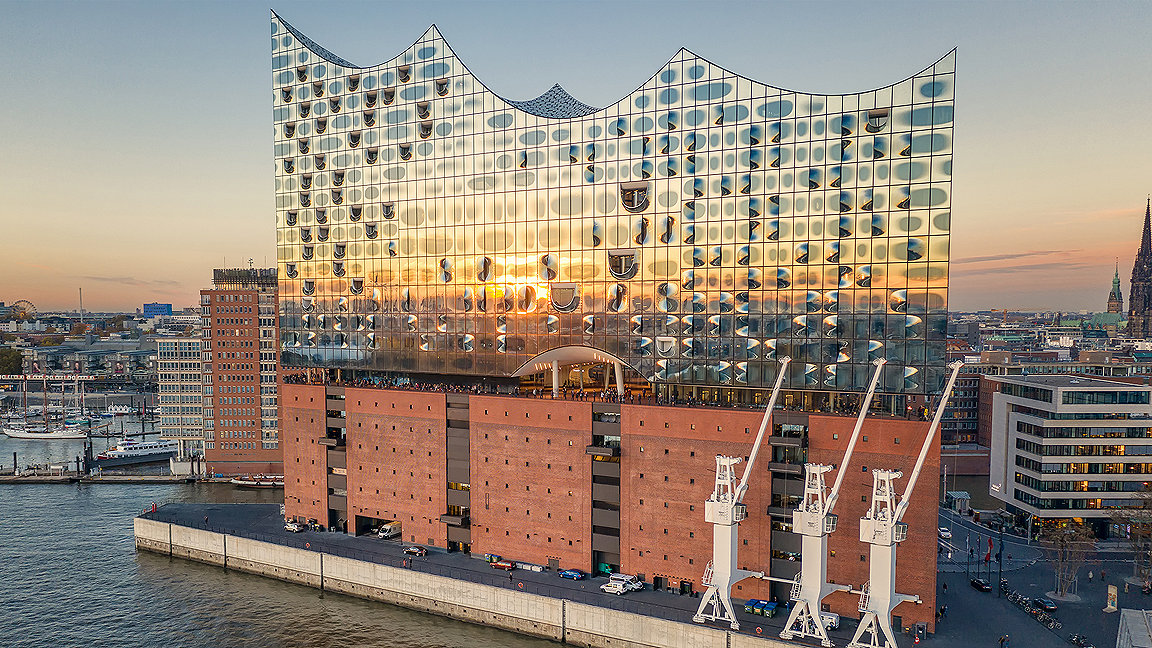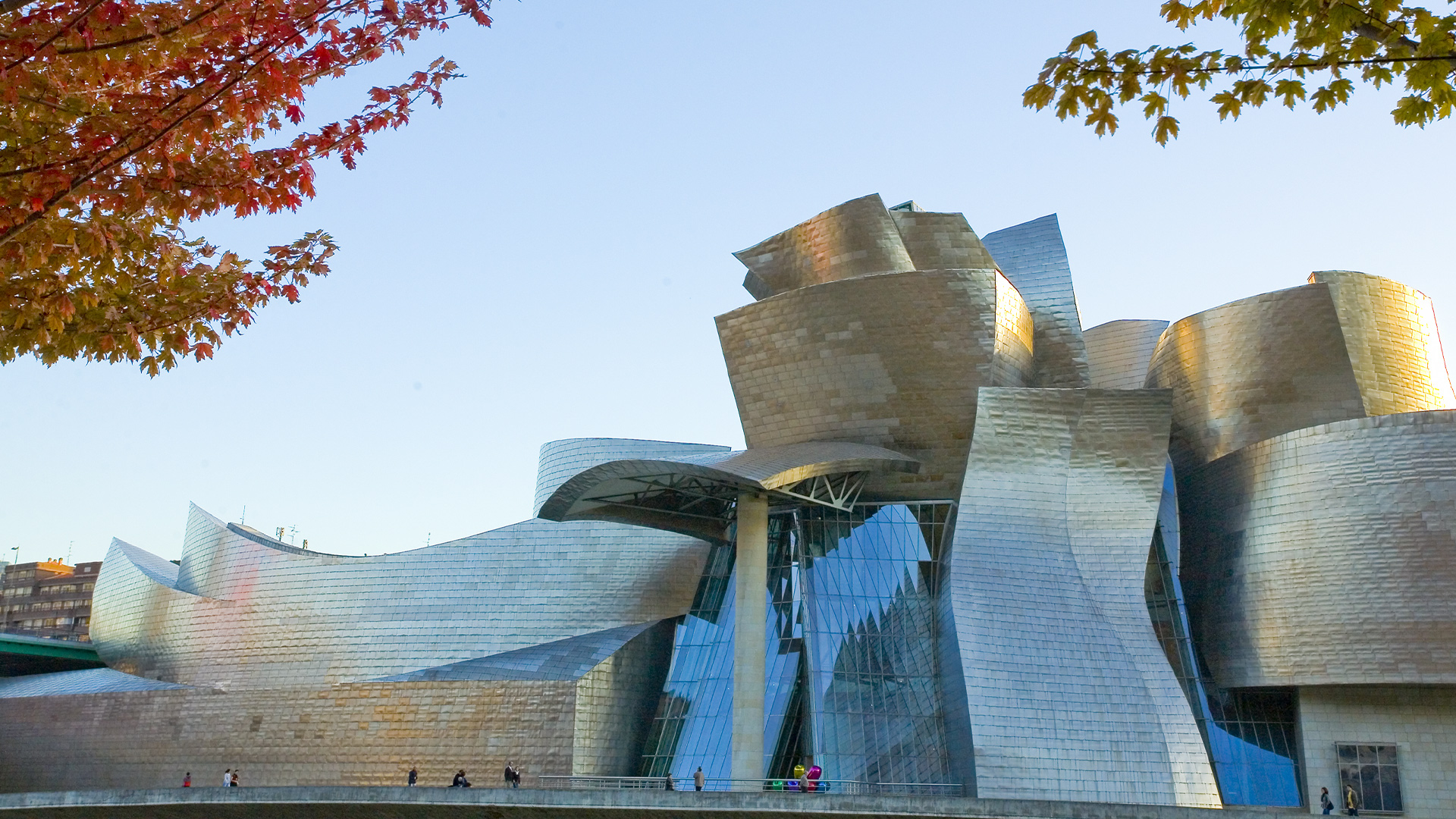
Elbphilharmonie, Hamburg
In Marseilles, downtown shoppers browse the latest fashions at Les Terrasses du Port shopping centre, while upstairs passengers embark for cross-Mediterranean ferries.
In Porto, the Leixões Cruise Terminal is abuzz even outside the tourist high season – students at the local university’s ocean science and technology park are busy conducting marine biology experiments.
In New York City, residents of the low-income South Bronx neighbourhood stroll along the East River on the perimeter of the McInnis Cement terminal, which maintains a public walkway even as it receives cement shipments from ocean-going vessels.
In each of these three cities, traditional maritime uses coexist with other types of activities along urban waterfronts. This delicate balance is more exception than rule in port cities around the world, which face constant pressure to redevelop maritime land to accommodate the desire for housing, office space, and tourist attractions along the waterfront.
While all port cities recognise the need for regeneration, some are not entirely abandoning their seafaring roots. They are looking to cultivate their part in the emerging ‘blue economy’, improve the environmental record of traditional maritime industries, and otherwise retain their connection to the working waterfront. In these cities, land use policies and flexible building typologies are the keys to preserving waterfront livelihoods. In a changing urban landscape, the general public views the water’s edge as a playground while for some it remains a workshop essential to their livelihoods.
“We’re all looking for quality jobs and I doubt they are solely going to come from condos and apartment towers,” says José Sanchez, international project manager for the International Association of Port Cities (AIVP).
The mid-20th century invention of the cargo container doomed traditional finger piers, the man-made structures jutting out into the water which for millennia had been the main way to move cargo in and out of cities.
“For about 5,000 years, waterfronts were the back door to cities – they were ugly and polluted,” says Peter Hendee Brown, an urban development consultant and author of America’s Waterfront Revival. “All of a sudden, they became a public amenity. In a very short amount of time, people’s idea of an urban waterfront changed.”
Many cities responded with full-throated regeneration. Hamburg’s HafenCity is by some accounts the largest inner-city redevelopment scheme in Europe, with an estimated £11bn sunk into 1.27km2 along the Elbe River. For Martin Eberhardt FRICS of AperDurus, a real estate and management advisory firm active in HafenCity, the land’s central location made it irresistible for such a transformation.
“What’s really special for Hamburg is that the city centre and town hall are so close to this development site,” he says.
Despite new construction that will bring some 12,000 residents and 45,000 workers to the district by 2025 and landmark buildings like the Elbphilharmonie concert hall, HafenCity retains a significant portion of its maritime history. For one, it neighbours the Speicherstadt and Kontorhaus District, a UNESCO World Heritage Site of historic port warehouses.
Today HafenCity’s oldest standing warehouse is now the International Maritime Museum. Many more warehouses are landmarked under heritage protections where they still serve light industrial and logistics roles like roasting coffee or storing carpets for global shipment.
“The warehouse district was always an iconic pearl of Hamburg,” Eberhardt says. “Both citizens and tourists love it.”
Across the Atlantic, the maritime community in New York City relies on zoning designations to preserve the working waterfront in a city defined by its harbour. Industrial Business Zones and Significant Maritime and Industrial Areas are two land-use designations that protect maritime industries in the Big Apple, from shipyards to cargo ports. But along New York’s 520 miles of shoreline, much of it prime for property development in locations like Manhattan and the East River waterfronts of Brooklyn and Queens, the tension between working waterfront and other uses runs high.
The development of Hudson River Park transformed derelict piers on Manhattan’s west side into a flagship waterfront park and the recent renovation of Pier 17 near Wall Street turned the site into an event space. But according to Waterfront Alliance vice-president Karen Imas, both have one major fault: “There’s nowhere for a vessel to tie up.” When a visiting tall ship or historic sailboat comes to New York City, they struggle to find somewhere to dock and no city regulations require that piers actually be usable by ships.
“When something new is being built at the water’s edge, it’s critical to think about how to capitalise on the maritime aspect of the project,” Imas argues. In 2018, the Waterfront Alliance issued the Waterfront Edge Design Guidelines (WEDG) to remedy this oversight and offer a national handbook for US urban waterfronts.
Smart design is essential in ports that blend maritime industrial activities with other urban functions. Edinburgh has had some success with this mix in Leith, a still-functioning port now also home to commercial, residential, and retail. “When people are home in the evening, they don’t hear the port functioning. It’s not that big a hindrance to them,” says John Boyle FRICS, director of research and strategy for Rettie & Co. “There’s almost a chicness about Leith because it has hard and soft edge parts that people quite like. The mix coexists quite well.”
Some mixes, like the flexible waterside buildings in Marseilles and Porto, are only possible due to recent relaxation of the International Ship and Port Facility Security (ISPS) Code, which implemented a security cordon around maritime activities in the wake of 9/11.
“Until not so long ago, the ISPS code was a hard barrier separating two worlds,” says Sanchez. “There are now more interesting and creative interpretations of the code that still respect the separation.”
A strong guiding hand from local government, especially independent port authorities, is essential to catalyse investment in brownfield sites that frequently require extensive remediation. “Investors want certainty,” notes Sanchez.
The Port Authority of Barcelona chartered the Port Vell urban renewal scheme in 1988. More recently, the municipality and port authority in Rotterdam has lured 60 companies, some of whom are start-ups innovating in the maritime and offshore sectors, to the Rotterdam Makers District on the site of a former shipyard. In Marseilles, the City-Port Charter guides waterfront development to balance competing uses and ensure the long-term viability of maritime operations.
As Sanchez rightly asks: “What is a port city without a port?”
For more must-read Modus articles, sign up for the newsletter.
“When something new is being built at the water’s edge, it’s critical to think about how to capitalise on the maritime aspect of the project” Karen Imas, Waterfront Alliance


